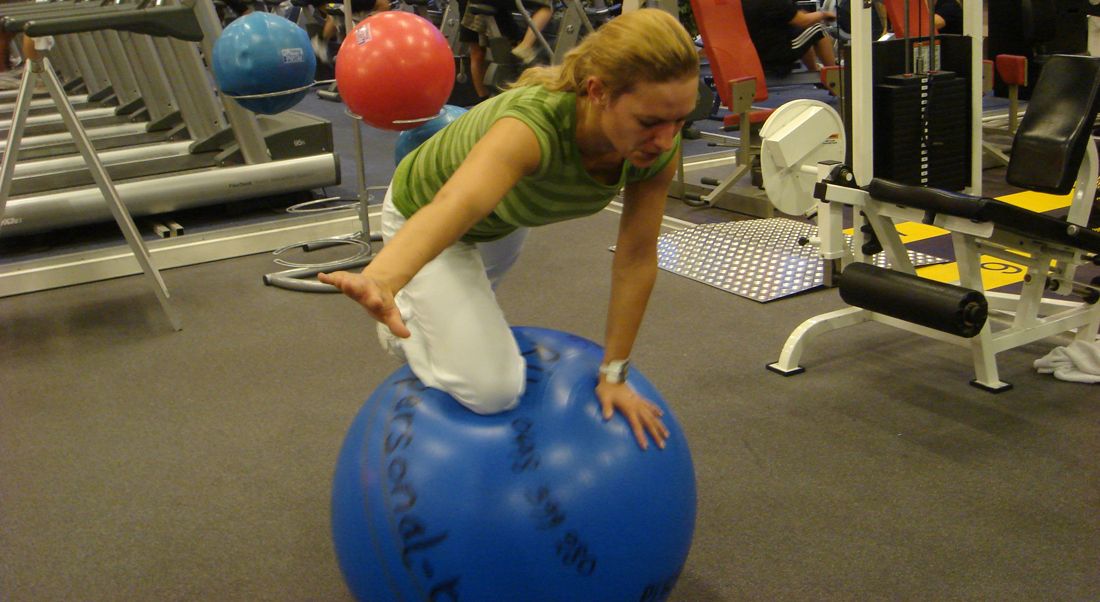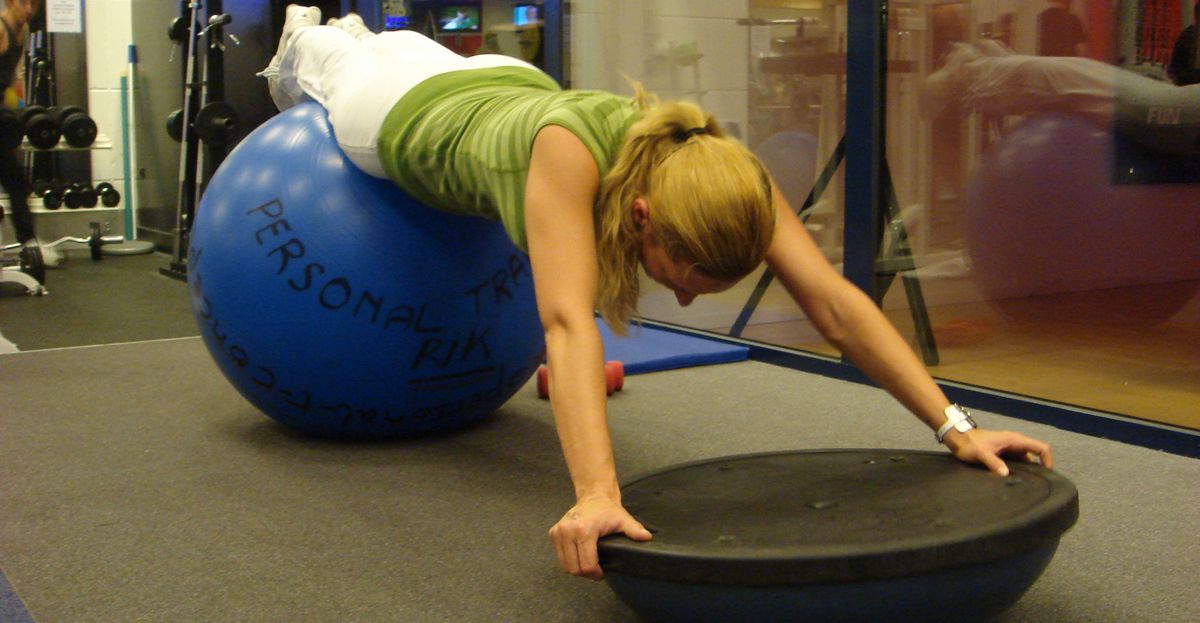Definition
We can divide functional training into 2 concepts: functional training and body-building.
Functional training means training that is functional in relation to what is being exercised. There must be maximum transfer of the trained property to your training goal. Transfer is a very important concept in functional training. How we integrate this into our training depends to a large extent on the goal in mind.

By strength training, we mean training with resistance. This can be done using your own body, a partner, elastic bands, weights, machines or other aids. The specific effects of strength training are therefore to increase muscle strength and strengthen bones and tendons. It also helps to lower blood pressure and increase self-awareness. Strength training is mainly used by top and power athletes, but it can also be valuable for all people in their daily activities.
Functional strength training is thus strength training that trains the power traits that people need in their sport or daily life. This means that functional strength training is appropriate for a wide range of people.
Characteristics
ZeA functional strength training programme is based on six basic exercise patterns:
1. Push (from the shoulder joint)
2. Pull (from the shoulder joint)
3. Bend (from the hip joint)
4. Lunge (from the knee joint)
5. Twist (from the trunk)
6. Squat (from the upper legs)

In addition to these forms of movement, there are other characteristics of functional strength training:
First of all, we use as many free weights as possible or a cable station. The goal is to work intensively on coordination. These basic exercises activate many muscles simultaneously and increase energy.
A second important component is training on an unstable plane, such as a BOSU (Figure 3), fitness ball, trampoline, … This allows for better solicitation of the muscles in the trunk and the smaller muscles around the joints, which in turn helps to stabilise the body.
A third functional area is unilateral training. Performing exercises unilaterally increases activity in the trunk muscles.
Finally, this training includes specific exercises for the abdominal and lower back muscles.
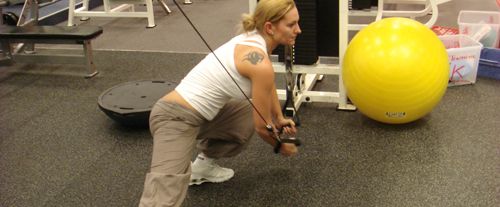
Functional exercises
FUNCTIONAL EXERCISES aim to attune the actions of muscles in strength, time and space to improve balance and proprioception. The overarching aim is to achieve neuromuscular integration within exercises and movement patterns. To achieve our goal, a number of criteria must be considered when preparing the functional exercise:
1. You must be responsible for maintaining stability during movement yourself. The exercise must promote the body’s reflex to adopt an upright posture. It is therefore important for functional training to involve exercise in the 3 dimensional planes, the 3 planes into which the body is subdivided;
2. The exercise should develop reflexes in the area of proprioceptors and stabiliser muscles. The deep muscle sensation induced by reflex receptors in muscles, tendons and joints must be stimulated. These receptors provide information about how your body moves in space;
3. The centre of gravity must always be above the support base. When we neglect this component, the training is a failure, and the risk of injury is very high;
4. The exercises must have a large degree of transfer. The intelligent muscles must be developed and the focus should not be on only one muscle group. We must never forget that the body only knows movement, not muscles. When we train a single muscle, it strengthens, but the body cannot use the extra force in its functional movements;
5. We have to realise that what is functional for one muscle, is not for the other.
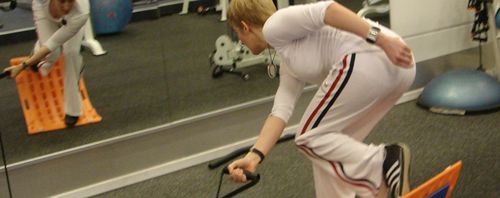
Transfer Value
In functional training, the goal is to achieve maximum transferability (transfer) to daily activities or sports. An important task therefore consists in applying the movements that we train in a way that allows us to see a specific effect on daily life or sports. This means that the exercises proposed must include varied movements that are natural.
For this, we may use free weights, cable systems or small aids. This helps us to exploit our freedom of movement. In everyday life, certain movements or actions require that the upper limbs and torso be stabilised with respect to the lower limbs. To optimally train for these situations, we use free aids.
To achieve effective transfer to everyday movements, we depend on a number of components that must be addressed simultaneously. Each component must be considered as a part of the movement as a whole.
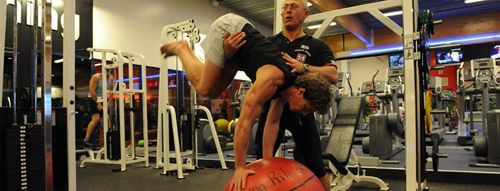
The components to achieve functionality:
1. Technische variations: It is important to offer a large number of variations of one exercise. This serves to adjust the starting posture and execution to meet the set goals. The resulting possibilities of the functional exercises are inexhaustible.
2. Neuromuscular development: This component determines to a large extent an athlete’s coordination capabilities. To be learned, the movements must be carried out in accordance with the goal to be achieved. To achieve effective transfer to other movements, we ensure that the range of exercise is equal to or exceeds the intended movement. During the training, each joint and muscle progresses towards the ultimate goal.
3. Coördination: It is important for athletes to have good timing of muscle contraction during movement. The entire body must be in perfect harmony to perform a successful movement. The interplay between all receptors that control and analyse the movement and the muscle systems that make the movement possible determines to a large extent whether an exercise achieves the predetermined goal.
4. Stability: It is important to constantly ensure active stability during exercises. But it is also important to link this stability to explosive power. The goal is thus to help the athlete develop strength out of active stability
5. Synchronisation: Synchronisation is the functional interplay between the different muscle groups during daily activities. A complete chain of muscle contractions is necessary for perfect synchronisation. The upper limbs must function in an error-free interplay with the shoulders and back muscles, resulting in active stabilisation. The lower limbs, in turn, form the basis for stability of the back muscles.
6. Speed development: The power of the movement is best transferred when you practice it at the same speed as in daily life. A positive transfer is achieved by working at a higher speed. If we perform the exercises more slowly, the transfer is negative.
7. Ballistic impulse: This is a very important component. This refers to the transition from eccentric to concentric muscle contractions and vice versa. These movements occur very frequently in our daily lives. Good development of the ballistic impulse is very important to preventing injury. This component is especially important in the transition from eccentric to concentric contractions, and the aim is a concentric increase in power.
8. System effect: During our training we focus on free weights and small aids to maximise muscle activity. This also increases the hormonal response and makes it more specific. This hormonal boost has a positive effect on the development of strength, but also increases the cardiovascular effects.



